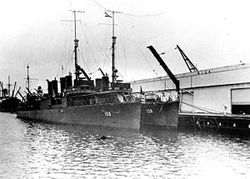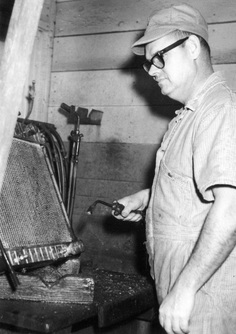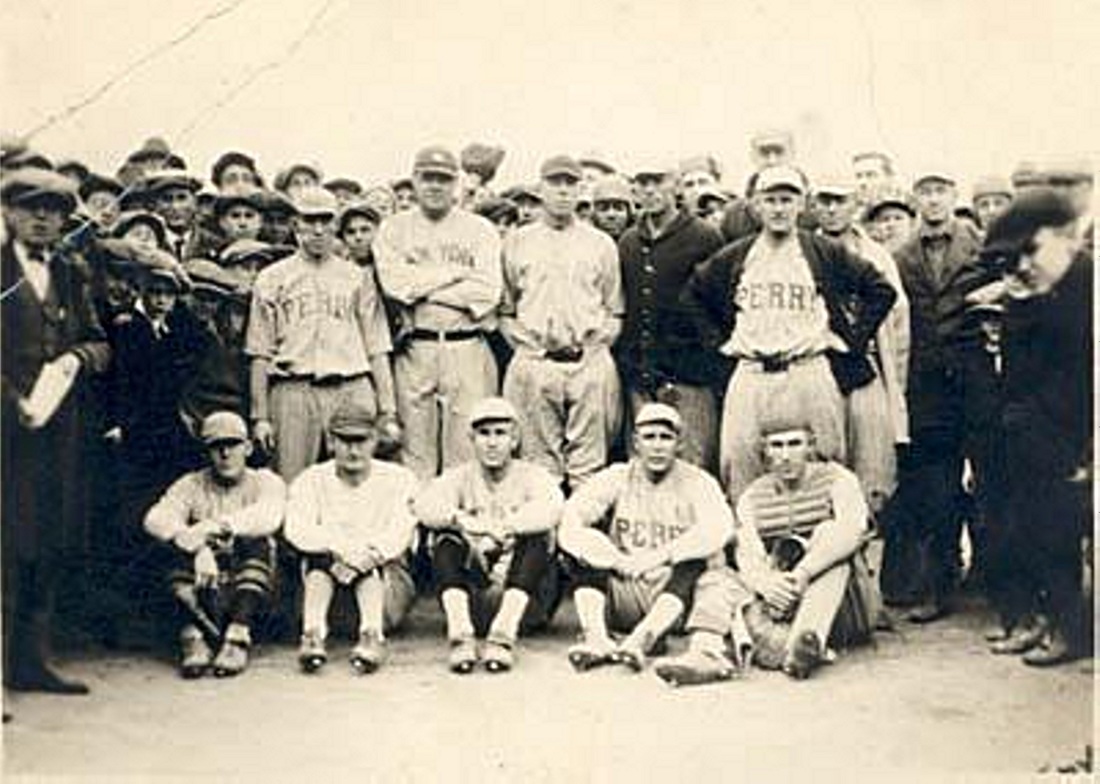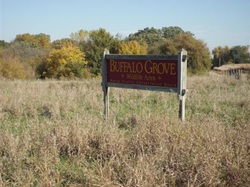-
Government
- Perry Next
-
Resident Info
- AmeriCorps Perry
- Tree Trimming and Ash Tree Removal
- City Projects Blog
- Downtown Improvements
- City Newsletters
- Public Service Announcements
- Snow Ordinances
- Fireworks
- Waste Water Treatment Plant Project
- Pet Registration
- Garbage & Recycling
- Yard Waste
- Property Maintenance
- Rental Property Code Enforcement
- Community Calendar
- Contacts & Staff Directory
- Links of Interest
- Maps
- Media/ News
- Chamber of Commerce
-
Business & Development
- Culture & Recreation
- I Want To . . .
 USS Chew USS Chew Because we are rapidly approaching Veterans’ Day on November 11, 2013, it is appropriate that we honor a local business owner who was serving aboard the USS Chew DD-106 when Pearl Harbor was bombed on December 7, 1941. That business man was Dale Elifrits who owned and operated Elifrits Radiator Shop in Perry. Dale who was born and raised in Spirit Lake, Iowa entered the United States Navy in the fall of 1939. Shortly after his boot camp training he was stationed aboard the USS Chew DD-106. The USS Chew was one of 111 Wickes-class destroyers built by the United States Navy from 1917 thru 1919. There were 113 officers and enlisted personnel on the USS Chew at the time she was anchored at Pearl Harbor. Members of the crew opened fire on the Japanese planes with 50 caliber machine guns. Dale related that he was able to see the faces of the Japanese pilots as they flew over the ships anchored in the harbor. The crew of the USS Chew kept firing during all three waves of attack by the Japanese pilots. During the ensuing battle the crew of the USS Chew is credited with hitting a Japanese plane, disintegrating the plane in mid-air. They were also able to hit a plane demolishing the tail assembly of the plane. During the battle and rescue efforts of the Battle of Pearl Harbor there were one casualty and one missing in action from the crew of the USS Chew. In retrospect, Dale felt that he was lucky to have been assigned to the USS Chew as it was the larger ships like the Arizona that the targets of the Japanese pilots. From 1941 through the end of World War II, the USS Chew operated out of Pearl Harbor on patrol. She took on periodic duties among the Hawaiian Islands and made occasional trips to San Francisco. With only six months of his enlistment left, on one of the trips to the mainland, Dale left the ship and was stationed in San Diego, California. During his duty in San Diego Dale worked at a naval salvage yard where he worked with sheet metal. He was told by a senior officer at the naval salvage yard that he should look into the radiator shop business as it would be an exploding business as the car industry was rapidly growing. Two important life events occurred during his last six months in the military. He met his wife, who was from Woodward, Iowa and learned the trade of radiator repair. George Tomer is known in Perry as the only native son to have played Major League baseball and as a participant in the 1922 game when Yankee’s Babe Ruth came to town. Tomer played ball for at least seventeen different teams during his career and semi-pro ball for a few more. His baseball travels make for quite an interesting story, but this article is concerned primarily with his start in pro ball over a hundred years ago.
The Dubuque Times Journal on March 24, 1912 reported that 43 men had tried out for the Dubuque Hustlers team in the Blass B Three – I League. Among them was listed “G. Tomer – OF age 21.” Dubuque’s manager was Pants Rowland, who later led the 1917 Chicago White Sox to a World Championship. On April 16 the Telegraph Herald, shaving two years off George’s previously stated age, had this story: A nineteen-year-old youth walked into the sanctum of baseball headquarters and announced himself as George Tomer, the slugging outfielder hailing from Perry, Iowa. The “kid” did not waiver under the critical eye of the boss, and with a world of confidence requested that he be given his uniform, desiring to get in the harness immediately…With a wallop that resounded throughout the enclosure the youth sent the pellet sailing far over the heads of those stationed about the field. During that week of April the Dubuque papers continued to praise the play of Tomer, who had two hits, including a three-run homer, in an exhibition game with Sacred Heart College. On April 23, though, he was cut. the Telegraph Herald wrote, “Rowland has sent him back only that the rough edges may be removed….His hitting strength should land him a berth in any Class C or D league even this summer.” However, perhaps the manager discovered that Tomer was neither 21 nor 19, but only 16 years old! His birth date was November 26, 1895 and he was holding his own with seasoned players. The next year the Telegraph Herald reported that the “kid” was batting over .300 and was the fastest outfielder in the Kitty League, playing for Henderson, Kentucky. By the end of the year, he was on the bench of the American League St. Louis Browns. On September 17, 1913, manger Branch Rickey sent him up to bate once and he struck out. His age was 17 years, 9 months, 21 days. Although he continued playing well for many years thereafter, he never got another chance at the big leagues. Only one other player in recorded history of Major League baseball had but a single at bat at a younger age. This is what we would say to the barber during the 50’s and 60’s when we would go in to get our duck-tail haircuts and had sideburns. Because we avoided a haricut as long as possible, we didn’t know that our parents had already called the barber before we got there with their instructions. Before we could make our wishes known to the barber we had to first graduate off that hard board the barber put us on as a youngster to raise us up high enough to cut our hair. This article wil focus on a few of the barbers we remember in Perry. Lenny Stracke’s Downtown Barber Stylist at 1222 2nd Street is a shop that has been there since 1957, when Tommy Schirman and Frank Schomers barbered there. Lenny who came from Westphalia, Iowa attended his senior year in high school at Harlan. Lenny then attended Sioux City Barber College in ‘68 and ‘69. His first barbering job was in Audubon, at Sam Kauffman’s Shop during ’69 and ’70. Lenny started his own barber shop in July of ’75. Lenny’s Downtown Barber Stylist as it is called, is about the only barber left in Perry where you can still get the works. That means shampooing your hair, drying it, cutting it or having a shave. It is also one that you feel comfortable in just sitting around telling stories or talking about whatever is on your mind. Barber shops as I understand the history, served as both barber and doctor or dentist offices. I can’t imagine having stitches or a tooth pulled without novacaine, but I guess the amount of alcohol used helped the pain. At one time we had as many barber shops in Perry as we had gas stations. Two of them were in the fronts of pool halls. We really liked these shops as we reached our early teens. Actually you could learn a lot of different things in pool halls that weren’t taught in school! When your parents gave you money for a haircut, which at that time as $0.75 - $1.00 you better come home with a good haircut. As luck was against us many times, we got to playing pool and didn’t hear our name called for a haircut, resulting in all our money being spent on pool and pop. The next day after school we were right back at the pool hall with money for our haircut and our parents at our side, usually Dad! Then we had to go straight home to do some chores to pay our parents back the money we wasted on pool rather than a haircut. According to a 1949 historical article by E.N. Hastie, our community’s history probably began with a pioneer settlement called Buffalo Grove. Mr. & Mrs. John Moore of Champaigne County, IL, along with their family and a few relatives, traveled to this area in the fall of 1849, arriving on November 17th. Trees were less plentiful on open prairie then, and they decided to settle at a place known as Buffalo Grove. It was north and east of our present city, along Beaver Creek mostly in southern Boone County, with some in far northern Dallas County. The grove, nine miles long and ¼ mile wide, had walnut, oak, hickory trees and was named as the place the last buffalo in this area fed and were shot. Some of this group of only 17 decided to go east to a thriving community of Xenia.
Those who wanted to homestead shared a common, crude hut for the winter. Cabins were built in the spring of 1850 and a settlement took shape. It is said plenty of deer, elk, and turkey were available for food, while also being killed to protect crops. Within six years the Moore Cemetery started, a school was built, and Union Township of Boone County was formed. A lot of this community was near the present Perry Country Club. A town to be called Unionville was laid out in 1858 but was never developed. By 1861 two school districts were formed, called Lincoln and Douglas. Those districts survived into the mid 1940’s with the one room schools finally being removed in the mid 50’s. Many more settlers had arrived and early promoters of the community besides the Moores were Edward Vail, Calvin Brown, and James Morse. By this time, Alton had started and Perry was plotted. Some residents went into business in Perry. The community’s crops grew but the population did not. Very little specific information is known, and all that is left today is that cemetery. It was cleaned up and restored as much as possible by George Carpenter in 1977. It is on private property, slightly north of the Country Club. The caring landowners keep the plot clean and mowed, and they also maintain access to it. There are likely less than 30 graves there with the most recent found dated 1880. Most of these permanent residents passed on in the 50’s, 60’s and 70’s, of the 19th century. A veteran or two are buried there from the Civil War. The harshness of living in the era is seen by averaging out the age of those who died. Full information just isn’t available but what can be seen is that the average age of the few recorded deaths was under 18 years. Doctors and simple medicines were not known commodities and life was very hard. A few left their homes and families to enlist in the war effort, like Ney Pots, forever age 16 and one of the marked graves at the Moore Cemetery. The Perry Sales Pavilion has changed the history of Perry and most of Iowa since it was originally built in Perry during the 1920s. The opening of the Perry Sales Pavilion was the result of traveling abroad much as business is conducted today. Clarence and Howard Hill of Minburn had been to England and traveled on into Scotland where they found community auctions being held. These community auctions in Scotland provided a place for farmers and local town gardeners to bring excess product, livestock, or miscellaneous items to a vacant lot to be sold. Upon returning to Iowa the Hills contacted the Conway Brothers (dominate auctioneers in Perry) to see if they would have an interest in opening a business like that in Perry. It appeared that such a system might be adaptable to selling horses. Horses were very much in demand, furnishing all of the power to do farming. Beginning the Perry Sales Pavilion was a brave step as the first pavilion opened in 1928 just prior to the stock market crash. While most of us attended the weekly sales with our parents at the pavilion located at 18th Street and Willis Avenue. I was surprised to learn that the first sale barn was located about 2 blocks west of the former Workman-Timeon Funeral Home along the M & St. L tracks. For a brief period the sale barn was located on the south edge of Perry and in 1932 the Perry Sales Pavilion that most of us remember was constructed. Charles Paist, who was also the contractor for the “old junior high school building” drew the plans for the Perry Sales Pavilion. The exterior and dimension lumber for the building were hauled in by rail and then moved to the building site by team and wagon. Both the Milwaukee round house and the light plant that used coal at the time provided the cinders that were used inside the barn. The interior pens and gates were made from cottonwood trees, sawed in local mills. When the sale barn that many of us remember was officially opened on the first Saturday of September 1933, the crowd was so large that they broke down the east side of the bleachers! Perry merchants designated Saturday as shopping days for the farmers. The most recent location of the Perry Sales Pavilion was a little east of where the Perry Lutheran Home is located today. The area was on an old lake bed. Many of the men in Perry and the surrounding area used to tie boats up and shoot ducks at the present site of Orschelns and Peter’s East Car Wash. To me there was always a smell unique to the sale barn. At first when we unloaded our feeder pigs with my sons, you smelled manure of course and then the scent became that of the bedding straw. Then there was always the smell of popcorn, cigar smoke and the pleasant smell coming from the café which was located in the front of the building. Doris Hensen told me she made 10 pies every Saturday. It was a very busy café because in the early days the sales began early with the sale of cattle, pigs, horses and sheep. Many times sales lasted until midnight because there was so much to sell. The idea of selling things other than livestock started, making Wednesdays the day designated to sell excess inventory such as fruits and vegetables. Many people butchered their own animals and would carry half of a hog or quarter of beef into the ring where the meat was sold. At the time the crowds were larger on Wednesdays than on Saturdays. This auction continued twice a week until 1940. Then the two sales were combined with the sales being held on both Saturday mornings and afternoons. Max Conaway told Louie and Doris Hensen that most of the money taken in from sales was in the form of cash so it was Max’s job to carry the money home. In those days no night depositories were available. Max explained to Louie and Doris that in those days nobody would expect a kid to have that kind of money so he felt safe carrying it home. He said that the money was kept in the oven at his home for years. The variety of things sold at the Perry Sales Pavilion again changed as the need for hay and straw increased. The bales were sold outside the sale barn and were of particular interest to many of the horse people around town who came to buy this product. Another change came about because of the USDA laws. The sale of fruits and vegetables slowed down and the selling of butchered hogs and cattle was eliminated due to those laws. It is my opinion that the outside sale on the west side of the sale barn turned into a large yard sale. At times all the things from home weren’t sold and were just left there. Bernard Thogmartin was always there to haul away the junk. As time went on older farmers were being replaced by the younger farmers. These younger farmers weren’t interested in livestock so this was the end of the Perry Sales Pavilion as we knew it. The building was demolished by the then owner of the property Bob Rosene in August of 2009. Thus, after 76 years of service to Perry the Perry Sales Pavilion ended. Thanks to the helpful information provided by Perry Sales Pavilion owners Louie and Doris Hensen. Mike Kanealy, Perry Historic Preservation Commission While many of us missed the convenience of the neighborhood markets, the changes in technology had changed the way people shopped by the late 1930s. The refrigerator allowed people to store greater quantities of food for longer periods of time, making it no longer necessary to shop on a daily basis. Access to cars was the second prong of technology to change the way people shopped as cars allowed people to travel further and carry home packages with more ease. In 1937 when the shopping cart was invented, it allowed shoppers the opportunity for greater self-service within the grocery store while also allowing them to purchase larger orders of groceries. With increased transportation stores became larger and were able to import goods from far away locations. Thus the large variety of products available combined with self-service, and ease of parking thrived at the expense of the closure of many of the neighborhood grocery stores. Chain stores gained in popularity as they were able to change store layouts, locations and stock to accommodate new ways of shopping and cooking as women were looking for ways to shop more quickly and efficiently. Most grocery stores became supermarkets and moved to locations where they could have larger buildings where shoppers preferred the self-service atmosphere with only a clerk present at deli counters and check-out lanes. The locations afforded sizeable parking spaces for customers making it easy to purchase large amounts of product at one time. In small communities like Perry, most neighborhood grocery stores went out of business by the mid-1940s though some lasted into the 1960s and 1970s. Specialty shops like Stoners’ Market (butcher shops) in Perry lasted somewhat longer. Chain stores now dominate the shopping experience. Even locally owned stores during the late 20th century became part of a franchise like Super Valu or IGA. Jack Bruce Market/Sanitary Meat Market/Stoner’s Market was open continually for business from 1905 through 1999. This specialty store was located at 1301 Second Street (northwest corner of Second and Lucinda Streets. Jack Bruce opened the meat market in the early 1900s and was joined shortly thereafter by Harry Bruce. Around 1915 the brothers had a falling out and Jack moved his business to 919 Railroad Street and Harry continued his Sanitary Meat Market at 1301 second Street. Harry Bruce was well-known for his generosity during the depression. He would offer food to anyone who would sweep the sidewalk in front of the store, no matter how many times a day it had been swept. George W. and Edward Stoner were employees of Harry Bruce and eventually took over operation of the market. The Stoner brothers took over ownership after Harry Bruce’s death in the 1950s operating it until the early 1970s when it was purchased by George E. Stoner and his wife Betty and daughter Susie operated the market until it’s closing in 1999. The market served many of the Perry food establishments, nursing homes and hospitals making daily deliveries of fresh meats and cheeses. -John Palmer, Perry Historic Preservation Commission |
Historic Preservation CommissionArchivesCategories
All
|
-
Government
- Perry Next
-
Resident Info
- AmeriCorps Perry
- Tree Trimming and Ash Tree Removal
- City Projects Blog
- Downtown Improvements
- City Newsletters
- Public Service Announcements
- Snow Ordinances
- Fireworks
- Waste Water Treatment Plant Project
- Pet Registration
- Garbage & Recycling
- Yard Waste
- Property Maintenance
- Rental Property Code Enforcement
- Community Calendar
- Contacts & Staff Directory
- Links of Interest
- Maps
- Media/ News
- Chamber of Commerce
-
Business & Development
- Culture & Recreation
- I Want To . . .



